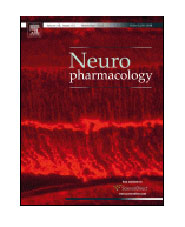
“The endogenous antinociceptive descending pathway represents a circuitry of the supraspinal central nervous system whose task is to counteract pain. It includes the periaqueductal grey (PAG)-rostral ventromedial medulla (RVM)-dorsal horn (DH) axis, which is the best characterized pain modulation system through which pain is endogenously inhibited. Thus, an alternative rational strategy for silencing pain is the activation of this anatomical substrate.
Evidence of the involvement of cannabinoid receptors (CB) in the supraspinal modulation of pain can be found in several studies in which intra-cerebral microinjections of cannabinoid ligands or positive modulators have proved to be analgesic in different pain models, whereas cannabinoid receptor antagonists or antisense nucleotides towards CB1 receptors have facilitated pain.
Like opioids, cannabinoids produce centrally-mediated analgesia by activating a descending pathway which includes PAG and its projection to downstream RVM neurons, which in turn send inhibitory projections to the dorsal horn of the spinal cord.
Indeed, several studies underline a supraspinal regulation of cannabinoids on g-aminobutyric acid (GABA) and glutamate release which inhibit and enhance the antinociceptive descending pathway, respectively. Cannabinoid receptor activation expressed on presynaptic GABAergic terminals reduces the probability of neurotransmitter release thus dis-inhibiting the PAG-RVM-dorsal horn antinociceptive pathway.
Cannabinoids seem to increase glutamate release (maybe as consequence of GABA decrease) and to require glutamate receptor activation to induce antinociception. The consequent outcome is behavioral analgesia, which is reproduced in several pain conditions, from acute to chronic pain models such as inflammatory and neuropathic pain.
Taken together these findings would suggest that supraspinal cannabinoid receptors have broad applications, from pain control to closely related central nervous system diseases such as anxiety and depression.”







